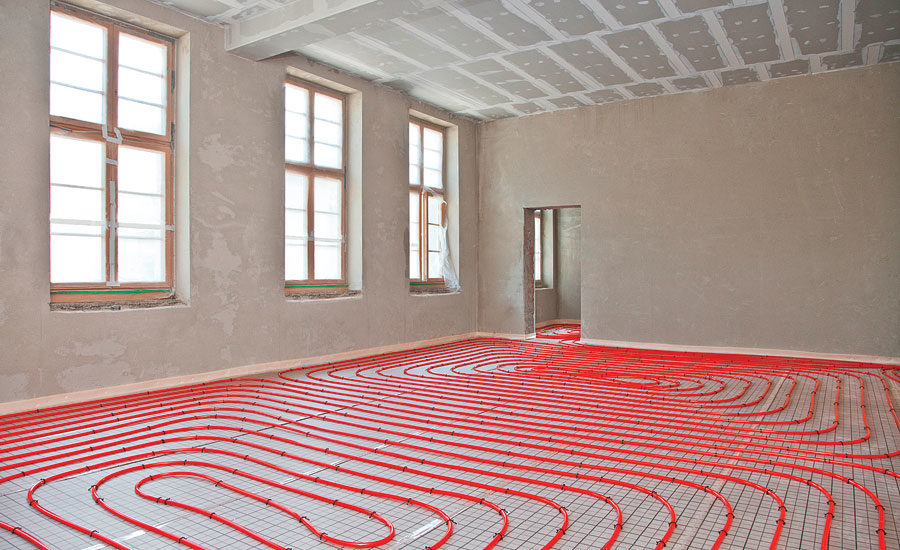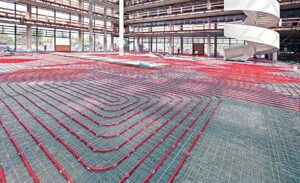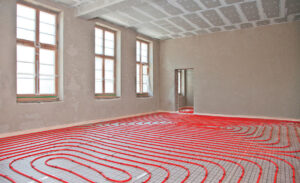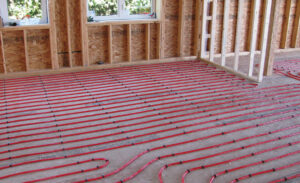In the quest for more sustainable and cost-effective heating and cooling solutions, radiant systems have emerged as a game-changer for homeowners and businesses alike. By harnessing the principles of radiant heat transfer, these innovative systems offer significant energy savings compared to traditional heating and cooling methods. In this blog, we’ll explore how radiant heating and cooling systems can help you save money on your energy bills while providing superior comfort and efficiency.
Energy Efficiency Through Radiant Heat Transfer
Radiant heating and cooling systems operate by directly warming or cooling the surfaces within a space, rather than relying on the circulation of air. This method of heat transfer is highly efficient, as it minimizes energy losses associated with air movement and ductwork. By focusing on heating or cooling the surfaces where occupants reside, radiant systems can achieve the desired indoor temperature with less energy consumption, resulting in lower utility bills and reduced environmental impact.
Precise Temperature Control
One of the key advantages of radiant heating and cooling systems is their ability to provide precise temperature control in individual rooms or zones. Unlike traditional HVAC systems, which often struggle to maintain consistent temperatures throughout a building, radiant systems can adjust the temperature of specific areas independently, based on occupant preferences and usage patterns. By minimizing overheating or overcooling, radiant systems optimize energy usage and further enhance cost savings.
Reduced Energy Losses
Traditional forced-air heating and cooling systems rely on ductwork to distribute heated or cooled air throughout a building. However, ductwork can be prone to energy losses due to leaks, gaps, and inefficient insulation. In contrast, radiant heating and cooling systems eliminate the need for ductwork altogether, reducing energy losses and improving overall system efficiency. With radiant systems, the heat or cold is delivered directly to the occupied spaces, minimizing waste and maximizing energy savings.
Lower Operating Costs Over Time
While the upfront cost of installing a radiant heating or cooling system may be higher compared to traditional systems, the long-term savings in energy bills and maintenance expenses can quickly offset the initial investment. Radiant systems require less maintenance and repair compared to forced-air systems, which often require frequent filter changes, duct cleaning, and component replacements. By investing in a radiant system, homeowners and businesses can enjoy lower operating costs and greater financial stability over time.
Environmental Benefits
In addition to saving money on energy bills, radiant heating and cooling systems offer environmental benefits by reducing greenhouse gas emissions and energy consumption. By using energy more efficiently and minimizing waste, radiant systems help lower the carbon footprint associated with heating and cooling buildings. As more homeowners and businesses embrace sustainable practices, radiant systems are becoming an increasingly popular choice for achieving energy-efficient and eco-friendly indoor environments.
Conclusion
In conclusion, radiant heating and cooling systems offer significant cost savings and energy efficiency benefits for homeowners and businesses. By leveraging the principles of radiant heat transfer and precise temperature control, these innovative systems provide superior comfort while reducing energy consumption and operating costs. As the demand for sustainable and cost-effective heating and cooling solutions continues to grow, radiant systems emerge as a smart investment for achieving long-term savings and environmental stewardship.






